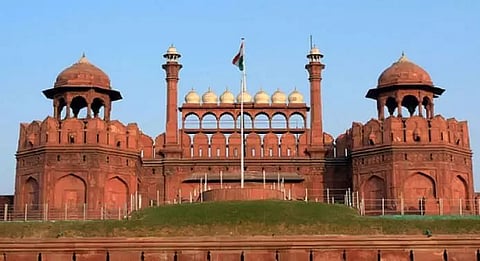
- Home
- Live Blog
- Breaking News
- Top Headlines
- Cities
- NE News
- Sentinel Media
- Sports
- Education
- Jobs

Kamal Baruah
(The writer is a former Air Warrior. He can be reached at kamal.baruah@yahoo.com)
It's a wonder to behold, who visits Delhi's most iconic monument Lal Qila. It's a symbol of splendour for incredible India. A view of the sprawling Lahori Gate from the most magnificent mosque Jama Masjid is beyond belief. The walls threw back echoes from fired guns at salute on Independence Day. Even the sound of heavy pairs of boots hit on the floor in a resounding crash at parade 'tham' (stop).
As we marched 30-inch steps in synchronization with 'kadam kadam badaya ja' (take all steps forward), listening behind the music from the Air Force band, we felt like conquering the Mughal Empire along with thousands of troops into the Red Fort, while grabbing the assault rifle on the order arms. Marching together with all those large contingents of Armed Forces was an immemorial occasion; however, we galloped along the red sand during our combatant days.
Built by Emperor Shah Jahan in the mid-17th century, when he decided to shift his capital from Agra, Red Fort has witnessed the rise and fall of empires as the Sikhs, Marathas, the Afghans were in battle with Mughalsover expansion of empire. The majestic grandeur and the Indo-Islamic architecture have been conquered by Persians Emperor Nadir Shah, plundering the Fort including the Peacock throne.
The last King had no army and upon his death in Burma during prison, was buried in an unmarked grave. With the fall of the last emperor Bahadur Shah Zafar (Mughal dynasty 1638-1857) and its aftermath of the mutiny and great revolt (1942), the British turned the Red Fort - the residence of Mughals Empire, into military barracks with hospitals, living quarters and administrative blocks, and destroyed over two-thirds of the fort during British India (1857–1947). However, the precious gem Kohinoor was surrendered by the Maharaja of Lahore to the Queen of England.
While the British shifted the capital from Calcutta to Delhi in 1911, the jewel in the crown Kohinoor was once again worn by the Queen Mary, the consort of King George V during the Delhi Durbar. The story of Azad Hind Fauj that was formed on foreign soil, fighting for freedom had changed India's freedom struggle. The Red Fort trials for soldiers of the Indian National Army (INA) created unprecedented popular support for Subhash Chandra Bose.
The Red Fort was transformed as a symbol of anti-colonial resistance when INA soldiers were imprisoned. Mahatma Gandhi fought the British with truth and non-violence forcing the British out of India that liberated the fort to the people of India, where the Union Jack Flag lowered and tricolour hoisted atop the iconic platform of Red Fort for the first time with 21 guns salute while playing the national anthem.
But actually, the Union Jack was never lowered on Independence Day in 1947, as it may offend British susceptibilities. The great event of the salutation of the new Dominion Flag of saffron, white and green at Red Fort was taken place in the evening after the swearing-in ceremony in the Durbar hall at 8.30 am. India's first Prime Minister Jawaharlal Nehru hoisted the flag at Red Fort but gave up all programmes as there were a quarter of a million people gathered amidst scenes of most fantastic rejoicing.
The age of kings has passed, while the fort stood witnessing the change of guard at India's Independence Day where the Indian tricolour flutters above its ramparts. Today, Red Fort remained as a stately reminder of a regal past, while the rest of the Mughal Glory crumbled into the cacophony of the old city 'Shahjahanabad', now the capital New Delhi is designed by Sir Edward Lutyens with well-planned avenues and circles.
The Red Fort was not all red but with marble, limestone and red sandstone too. The British in their zeal, painted it over many remaining structured with red paint or a plain whitewash to leave their mark. Now Archeological Survey of India decided to paint a wall in white as a tribute to the original gleaming white visage.
India wins back the ancient fort on 15th August 1947. Indian Soldiers marched into the fort with pride as it is theirs. Its building is preserved as museums, showcasing the epochs and the events that transpired within the walls. The flag symbolizes the triumph for the people of our country and every Prime Minister of India addresses the nation from the fort with a powerful resonance that passes from one ruler to the next.
It's love to watch children jostle to meet our honourable PM Narendra Modi while sporting his tradition of donning flamboyant and colourful turban that symbolizes the historic Red Fort's days of Emperors. Thunderous applause from a bustling crowd is echoed from the grandeur walls of the Red Fort, while the nation celebrating the 75th year of Independence Day.